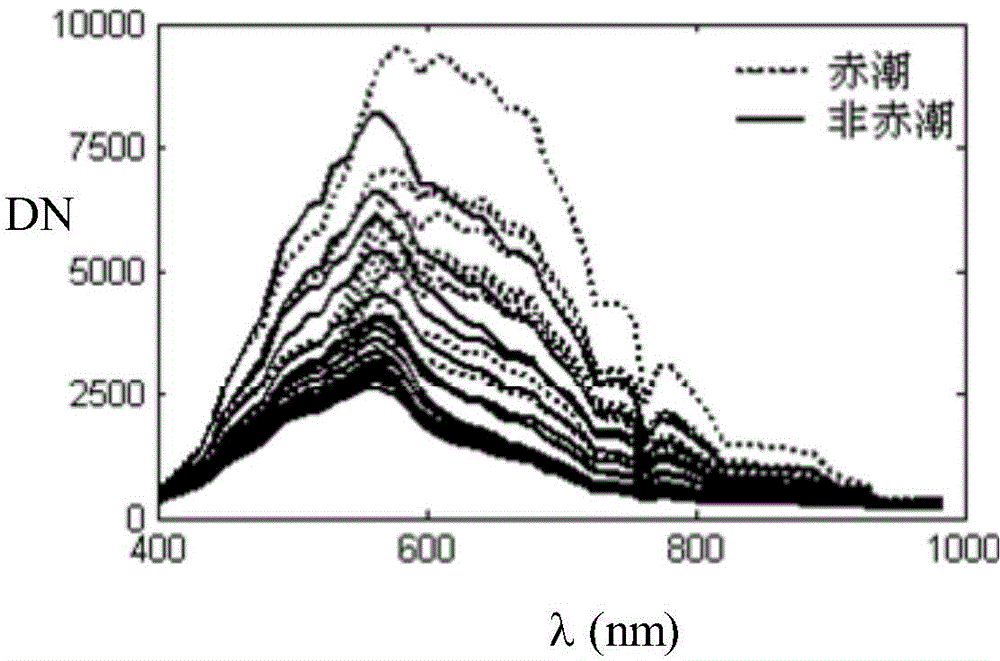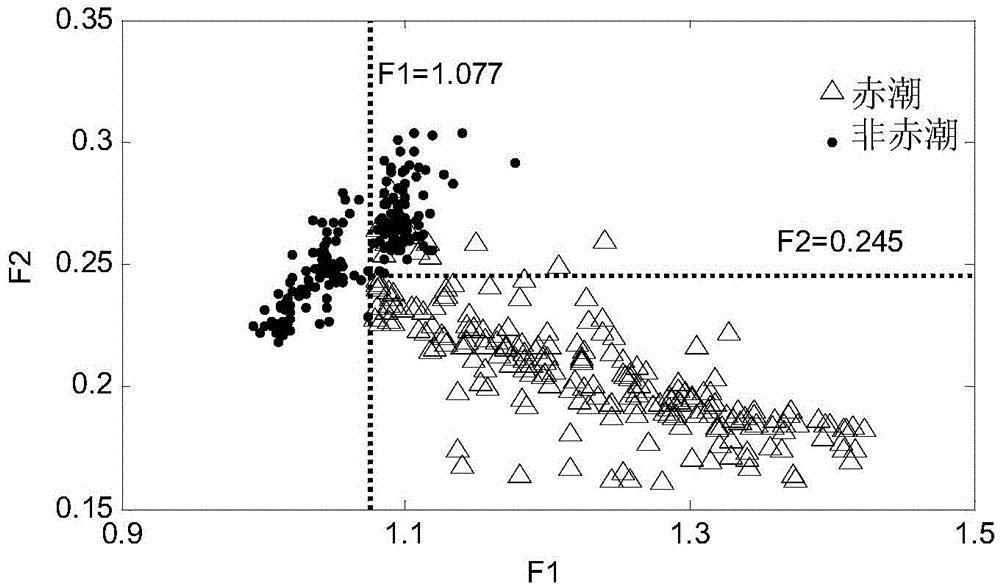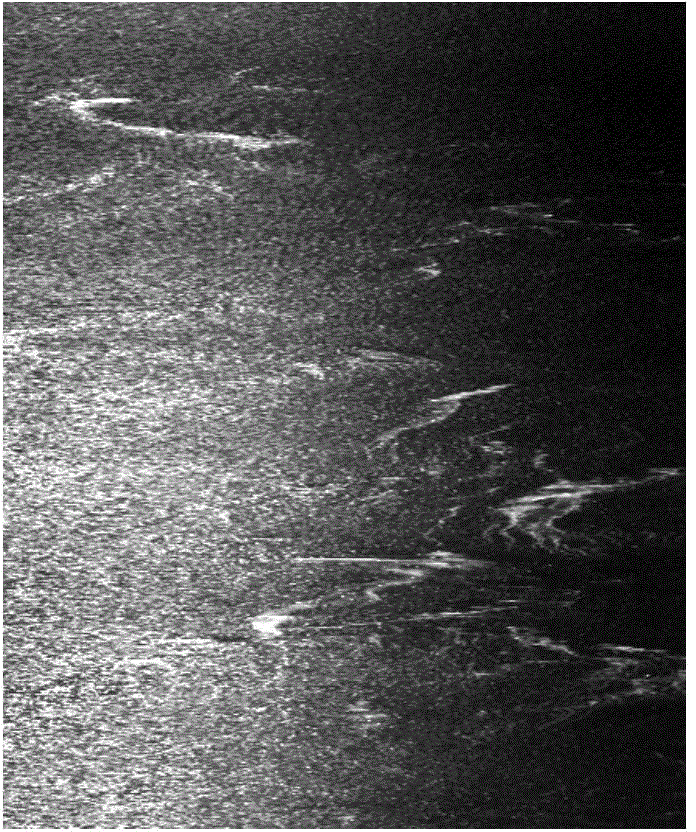Red tide detection method based on AISA aerial hyperspectral image
A detection method and hyperspectral technology, applied in the field of image recognition, can solve the problems of increasing on-site operation steps, affecting the accuracy of red tide detection, and difficulty in radiation calibration
- Summary
- Abstract
- Description
- Claims
- Application Information
AI Technical Summary
Problems solved by technology
Method used
Image
Examples
Embodiment 1
[0038] use as image 3 The airborne hyperspectral imager AISA in the Bohai Sea measured aerial hyperspectral images containing red tides for red tide detection. First calculate the DN curve area ratio F corresponding to each pixel of the aerial hyperspectral image 1 and the normalized blue-green band difference F 2 , the calculation result of the feature quantity of each pixel is as follows Figure 4 and 5 shown; then select F 1 greater than 1.077, and F 2 Pixels smaller than 0.245 are determined to be red tide pixels in aerial hyperspectral images, and the detection results are shown in Figure 6 , where the pixels detected as red tides are represented by black areas, and the red tide pixels are connected into sheets and strips, which means that red tides have occurred in the monitored sea area, and their distribution is basically consistent with the actual distribution of red tides.
Embodiment 2
[0040] In order to further verify whether the method can extract red tide information from the complex ocean background, based on three pieces of airborne hyperspectral images measured by AISA in the Bohai Sea, the airborne hyperspectral images containing sea ice, green tide and oil spill respectively ( Such as Figure 7 , 8 , 9) Using the method of the present invention to calculate the feature quantity F for all pixels in the image 1 and F 2 , when F 1 Greater than 1.077, and F 2 Pixels smaller than 0.245 are detected as red tide pixels in aerial hyperspectral images, and red tide pixels are represented by black. In the detection results of aerial hyperspectral images containing sea ice (the detection results are almost blank, so the illustration of the red tide detection results is omitted here), 0.2% of the water body pixels are falsely detected as red tide pixels, but these are A small number of pixels detected as red tide are scattered and sparsely distributed, and ...
PUM
 Login to View More
Login to View More Abstract
Description
Claims
Application Information
 Login to View More
Login to View More - R&D
- Intellectual Property
- Life Sciences
- Materials
- Tech Scout
- Unparalleled Data Quality
- Higher Quality Content
- 60% Fewer Hallucinations
Browse by: Latest US Patents, China's latest patents, Technical Efficacy Thesaurus, Application Domain, Technology Topic, Popular Technical Reports.
© 2025 PatSnap. All rights reserved.Legal|Privacy policy|Modern Slavery Act Transparency Statement|Sitemap|About US| Contact US: help@patsnap.com



